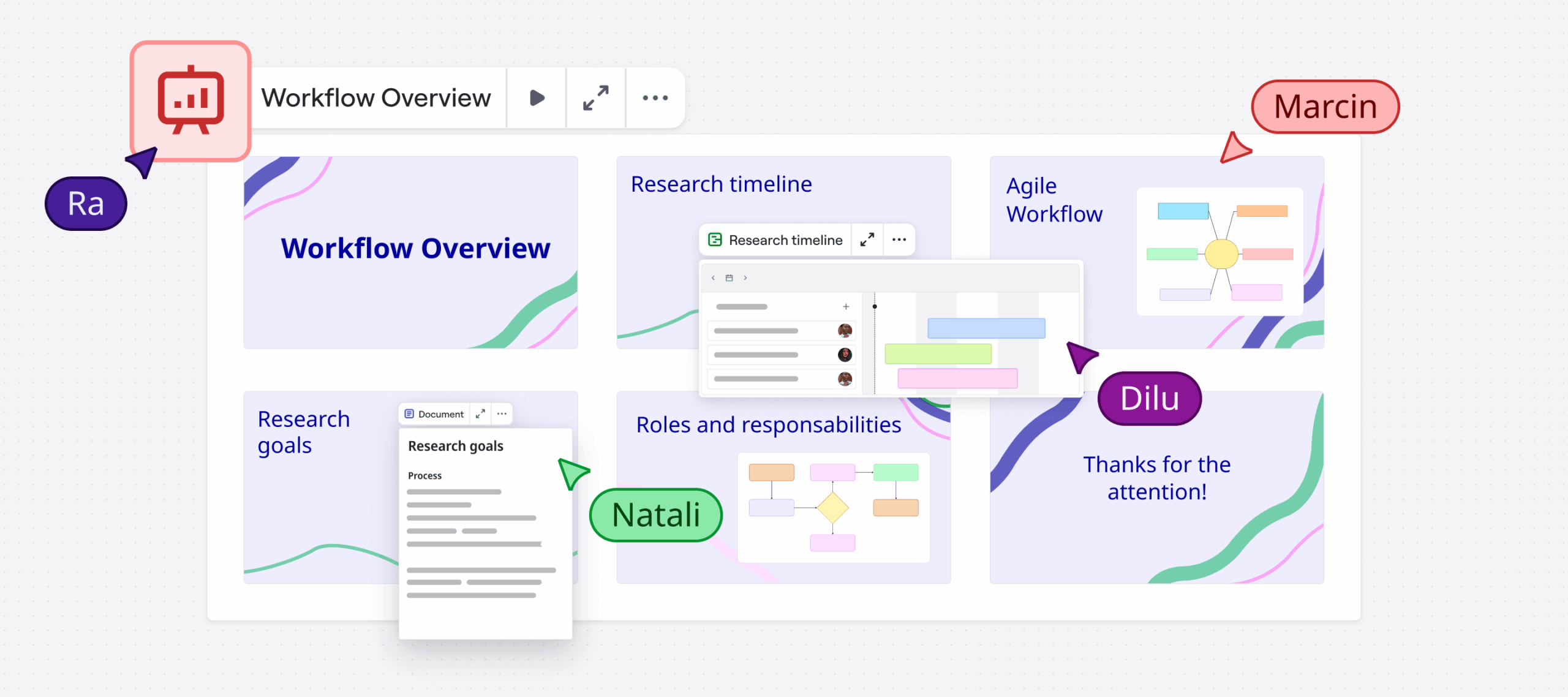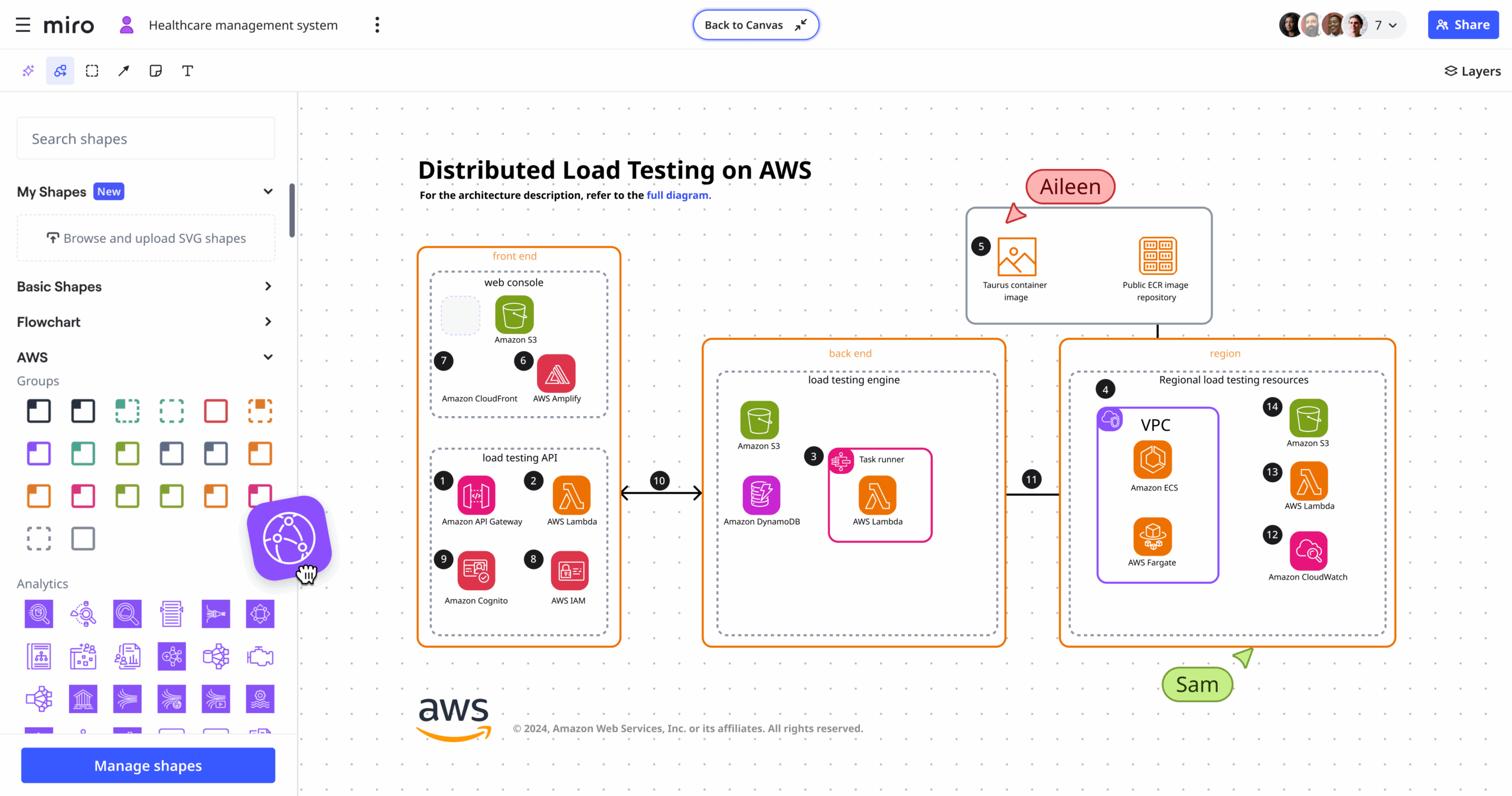Good eye contact, a firm handshake, and positive in-person experiences used to go a long way in building customer trust. So what are consultants to do in this new era where remote meetings are the norm and opportunities to build trust are not as obvious?
At Miro’s recent virtual event, Distributed, a panel discussion took place among some Miro experts across the globe to share what it’s like working with clients online and how they address the challenges of this new remote-dominated meeting environment.
The participants included:
- Peter Hay, Managing Consultant at Fluxx
- Sander Kruitwagen, BizOps & Practice Lead at Essense
- Joost de Leij, Facilitator of Change, Founder, Limelights
- Evgeni Minchev, Experience Design Expert at SoftServe
- Ross Tulloch, Principal Service Designer, Foolproof
During the hour-long Q&A, several opinions were discussed around building client trust, but all the participants shared a common mantra: It’s still about communication!
Ross at Foolproof noted that we’ve lost so many nonverbal social cues on video calls. When you just see the head and shoulders, you lose 90% of the cues that we usually use.
“It’s all about the C-word … communication. Over-indexing on the importance of communication has become a central element for all of us when working remotely with clients.”
The panel went on to explain the different ways they communicate in the post-pandemic environment to build trust with their client. The ideas can be summed up in these three overarching approaches.
Find new ways to get personal
When you no longer sit in the same room with clients, you have to work even harder to find ways to connect with them. Even though you are remote, you can still create opportunities to get to know your clients on a more personal level.
Sander noted that while working remotely using Zoom and Miro, he realized how important those more informal moments became.
“Just one-on-one talking before a meeting or maybe a virtual coffee break where you can sense the mood of how things are going and how they are being perceived by clients can be invaluable.“
Sander Kruitwagen, BizOps & Practice Lead at Essense
Sander and his team at Essense developed several ways to facilitate these informal moments including:
- Icebreakers and energizers where they start meetings by getting personal and setting a more casual environment.
- More frequent breakout sessions, where people are a bit more comfortable to speak out and get more personal in smaller groups.
- Sending out parcels to participants beforehand through regular mail containing various items that they could use during the session.
Evgeni from SoftServe had a different observation about online communication. He noticed that remote meetings are actually more personal by nature, and by being aware of this fact, you can make deeper connections online.
“Lockdowns and pandemic measures did separate us physically, but I think in the world of online meetings, we actually became closer socially, emotionally, and also physically. Online we speak closer to people compared to the physical world because we’re literally whispering in each other’s ears. The fact that I’m using an external microphone right now is allowing me to communicate with you on a completely different level and in a way, it becomes a very intimate auditory experience.“
Evgeni Minchev, Experience Design Expert at SoftServe
Combining tools like Miro and Zoom allows people to focus on images, information, faces, and voices, recreating that side-by-side meeting feel and enabling people to contribute in different ways.
Joost from Limelights also added that companies are reevaluating their values and by far the most common theme centers around personal well-being. He suggests diving a little bit deeper into this personal side of people’s lives to help bring this value to life in the meetings.
“Making human connections is incredibly difficult, so you really have to break through to people, especially when their camera is off during a meeting. To break these boundaries, we encourage people to meet for lunch and ask each other really personal questions like: What did you want to be when you were young?“
Joost de Leij, Facilitator of Change, Founder, Limelights
When online communication gets more personal, you can make up for the lack of human cues that happen organically with in-person meetings.
Communicate with purpose and flexibility
Everyone is busy and in the new normal. Back-to-back video meetings are both a reality and extremely tiring. Zoom fatigue is real, and Joost at Limelights believes that an easy way to build client trust is to give them a little break once in a while.
By communicating with purpose and clarity in your meetings, you will relieve one of the client’s biggest personal pain points — wasted time.
“You can build tremendous trust with your clients by delivering clear meeting goals and outcomes that result in giving back that 15 minutes of the meeting. People are really done with back-to-back online meetings, which is why I am quite excited about the smart meeting feature that Miro introduced.”
Joost de Leij, Facilitator of Change, Founder, Limelights
While you can prepare your meetings to be efficient as Joost suggests, Sander at Essence also added the need to be flexible in case the meeting takes an unexpected turn.
He shared how it was easy to improvise or adapt to circumstances during in-person meetings, but nowadays you must plan ahead for that spontaneous communication that usually results in the best ideas and breakthroughs.
“Being remote has forced us to be even more clear, even by visualizing our project, the steps that we’re about to take, etc. We have to guide clients through processes that are often ambiguous and open-ended. Miro helps us align with clients by visualizing the things that we are about to do, and also what’s expected from them. If suddenly someone comes up with a new direction, we can use Miro boards and prepare different repositories so that you can really capture a new idea in real-time. This has really helped also in building trust and transparent relationships.”
Sander Kruitwagen, BizOps & Practice Lead at Essense
Focus on outcomes and document them
Clients are now more concerned with results than ever before. For consultants, more accountability can help build trust. Peter and his team at Fluxx are finding that true hybrid working means valuing outcomes over hours for both better employee engagement and work/life balance.
“Communication will be key to building and maintaining trust with clients, and our focus has shifted towards outcomes, as opposed to outputs. I heard somebody say the other day, and I agree with it, that trusting workplaces will be about adult-to-adult relationships, not parent-to-child conversations. So the managers who monitor where people are or question why they’re working at different times aren’t going to be the ones that are building a culture of trust.“
Peter Hay, Managing Consultant at Fluxx
This approach of communicating outcomes and trusting that people will do their part to achieve goals actually builds more trust. And this trust grows even stronger when you can measure results.
Ross from Foolproof agreed and reminded everyone that placing measurement at the heart of the work is more important than ever.
“Understand what outcomes the client has requested and add practical measurement elements throughout each project. So, for example, arrange and facilitate monthly reviews with the client to understand and clarify how we’re tracking against our own outcomes.“
Ross Tulloch, Principal Service Designer, Foolproof
Ross added that everything can be documented in your digital tools so there is no longer any confusion of the goals and measurement criteria. Plus it’s great for accountability.
“The client can reference all of the work in a shared repository. We use the digital collaboration tools in Miro to create that transparency and trust. The client now has oversight to what we’re doing. I mean, there’s no more excuses, man. We should now have greater trust and transparency between clients and consultants.”
Ross Tulloch, Principal Service Designer, Foolproof
Digital documentation of the entire process has become a form of communication that keeps everyone aligned, and the best part — it’s automated in tools like Miro so everything is saved for people to refer back to.
Communication is still king
Facilitating remote meetings and building trust with clients is all about communication, but not just any communication. It’s about being intentional.
When human communication cues that have developed over millions of years are suddenly removed from the situation, we must rethink how and what we’re communicating.
3 final takeaways
- Go way beyond the small talk on calls to go deeper with clients. You need to be intentional about getting to know them on a personal level.
- Communicate expectations, re-communicate those outcomes throughout the journey, and make sure your meeting tools document the entire collaboration.
- Show clients you respect them and their time by being over-prepared so that meetings achieve their goals, but also leave room for those magical moments when brilliant ideas are born.




